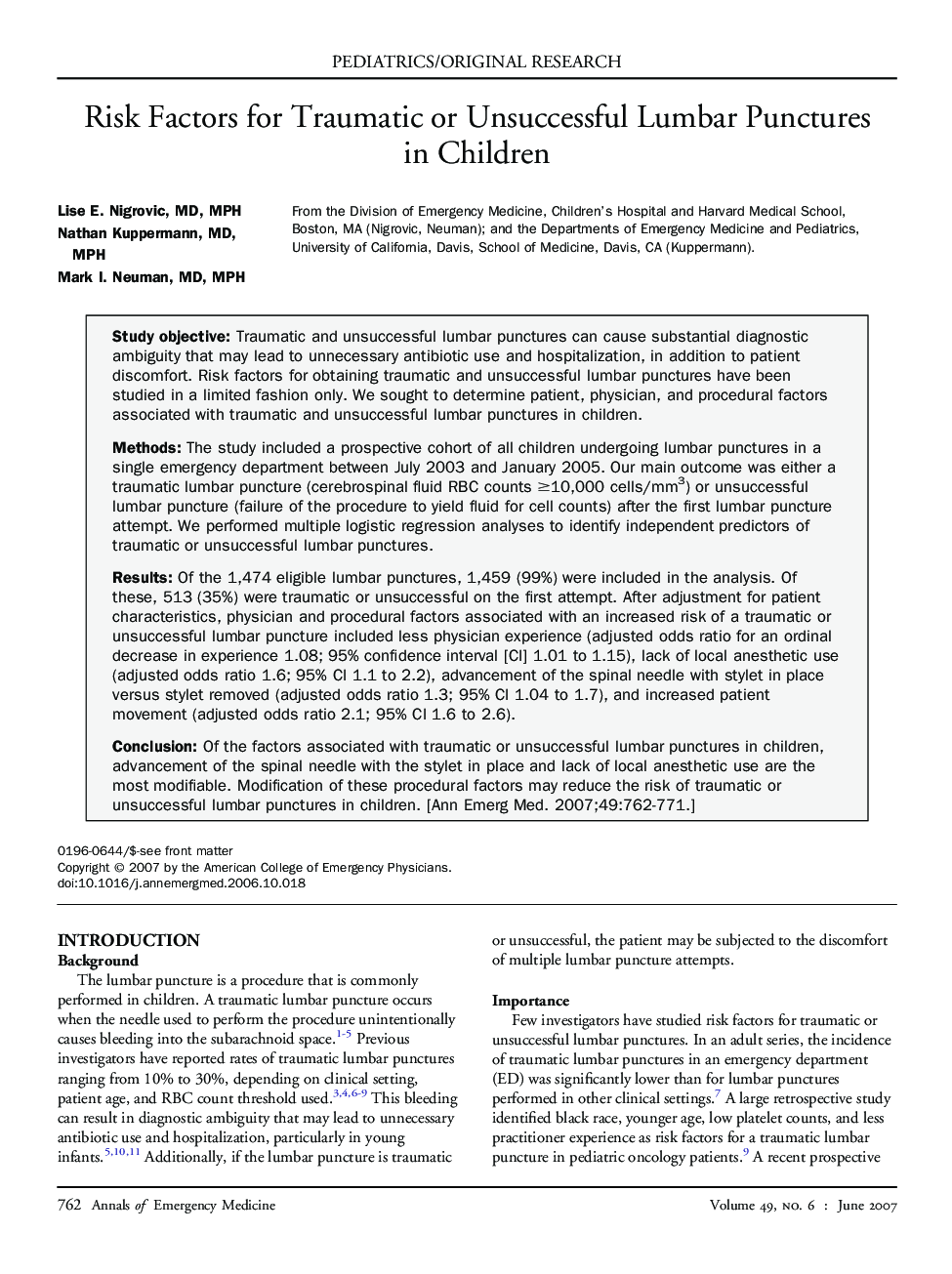| Article ID | Journal | Published Year | Pages | File Type |
|---|---|---|---|---|
| 3233670 | Annals of Emergency Medicine | 2007 | 10 Pages |
Study objectiveTraumatic and unsuccessful lumbar punctures can cause substantial diagnostic ambiguity that may lead to unnecessary antibiotic use and hospitalization, in addition to patient discomfort. Risk factors for obtaining traumatic and unsuccessful lumbar punctures have been studied in a limited fashion only. We sought to determine patient, physician, and procedural factors associated with traumatic and unsuccessful lumbar punctures in children.MethodsThe study included a prospective cohort of all children undergoing lumbar punctures in a single emergency department between July 2003 and January 2005. Our main outcome was either a traumatic lumbar puncture (cerebrospinal fluid RBC counts ≥10,000 cells/mm3) or unsuccessful lumbar puncture (failure of the procedure to yield fluid for cell counts) after the first lumbar puncture attempt. We performed multiple logistic regression analyses to identify independent predictors of traumatic or unsuccessful lumbar punctures.ResultsOf the 1,474 eligible lumbar punctures, 1,459 (99%) were included in the analysis. Of these, 513 (35%) were traumatic or unsuccessful on the first attempt. After adjustment for patient characteristics, physician and procedural factors associated with an increased risk of a traumatic or unsuccessful lumbar puncture included less physician experience (adjusted odds ratio for an ordinal decrease in experience 1.08; 95% confidence interval [CI] 1.01 to 1.15), lack of local anesthetic use (adjusted odds ratio 1.6; 95% CI 1.1 to 2.2), advancement of the spinal needle with stylet in place versus stylet removed (adjusted odds ratio 1.3; 95% CI 1.04 to 1.7), and increased patient movement (adjusted odds ratio 2.1; 95% CI 1.6 to 2.6).ConclusionOf the factors associated with traumatic or unsuccessful lumbar punctures in children, advancement of the spinal needle with the stylet in place and lack of local anesthetic use are the most modifiable. Modification of these procedural factors may reduce the risk of traumatic or unsuccessful lumbar punctures in children.
